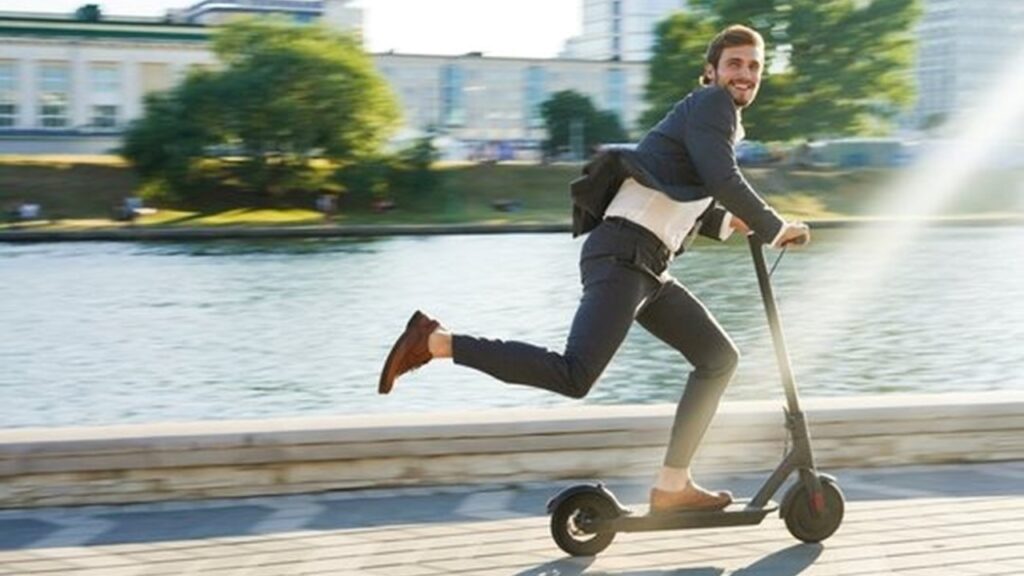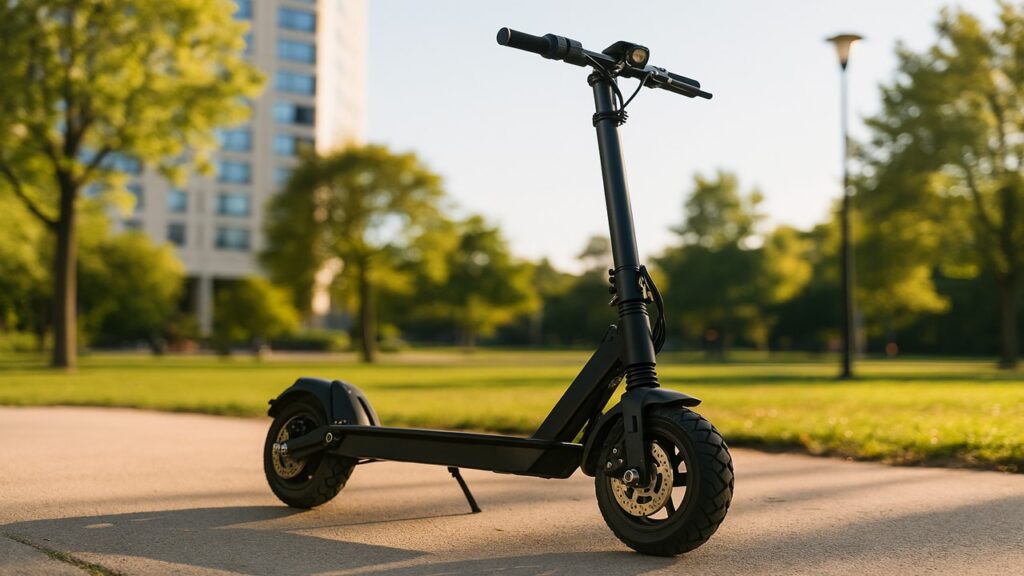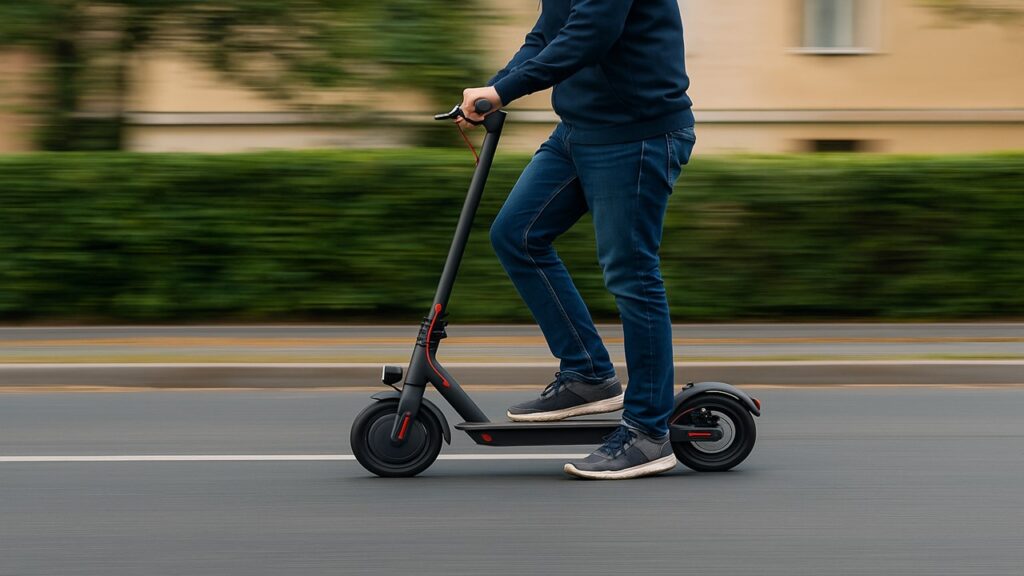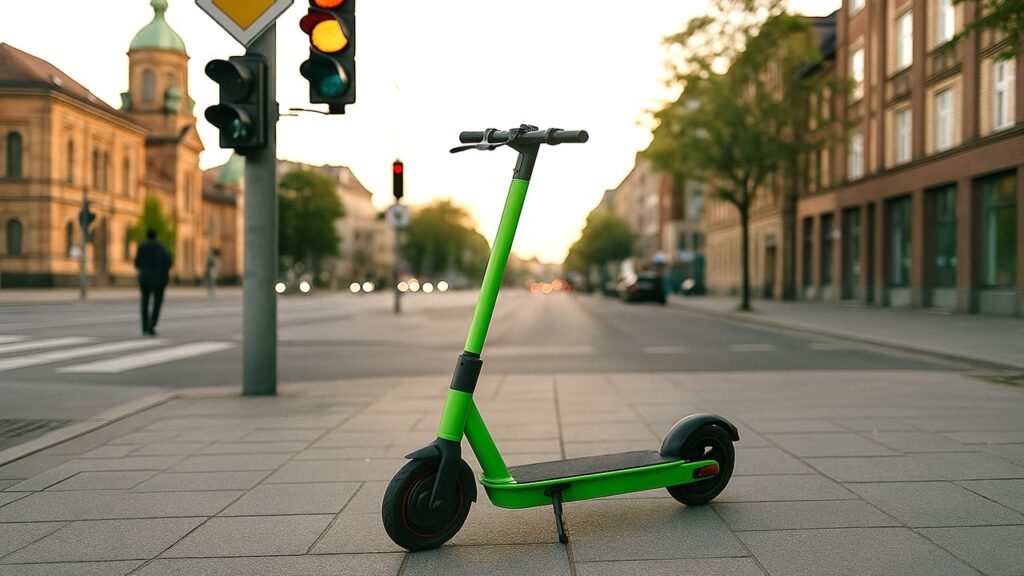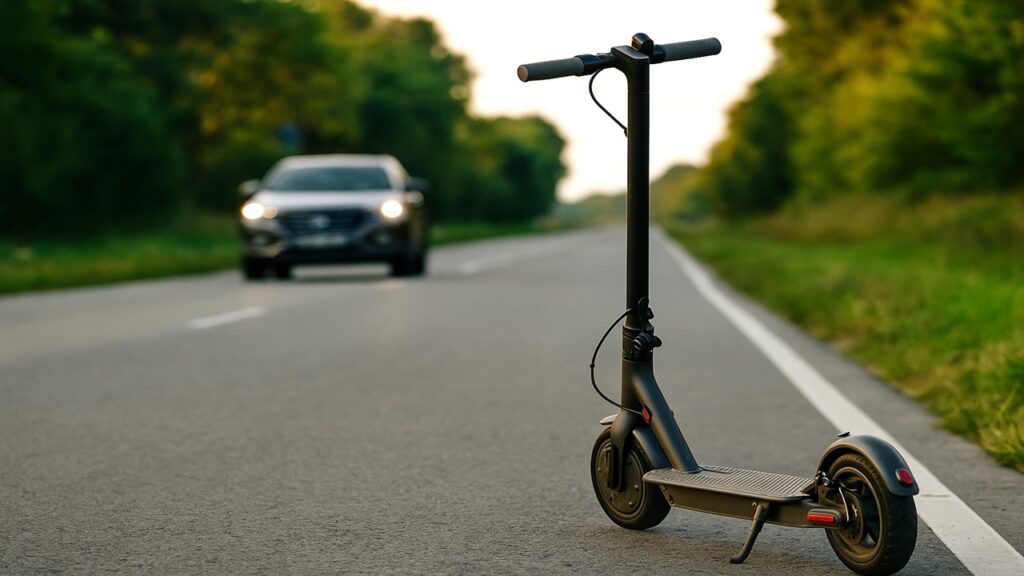
Yes, an electric scooter is generally considered a motor vehicle because it is powered by a motor rather than human effort. However, how the law treats it depends on the country, speed limits, and safety standards.
Key Summary:
- In many regions, electric scooters are treated as motor vehicles because they are powered by an electric motor.
- The exact rules vary from country to country, with different requirements for licensing, insurance, and where scooters can be ridden.
- Most privately owned scooters are not road-legal, since they don’t meet the safety and technical standards needed for approval.
- Riders should always check local laws to avoid fines, scooter impoundment, or other legal issues.
What Is Considered a Motor Vehicle?
A motor vehicle is any form of transport that is powered by a motor and designed for use on roads. This includes cars, motorcycles, mopeds, and—depending on jurisdiction—electric scooters.
Motor vehicles usually share three traits:
- They are powered by an internal combustion engine or electric motor.
- They are intended for road use, not only private land.
- They are subject to laws on licensing, insurance, and safety compliance.
Because electric scooters have an electric motor and are used for transport, many governments classify them under the same legal category as other motorized vehicles, even though their size and speed are much lower.
Why Electric Scooters Are Classified as Motor Vehicles
Electric scooters are often grouped with motor vehicles because they run on a motor and are used on public roads.
Key reasons include:
- Powered by a motor: Electric scooters operate with an electric motor instead of human power.
- Meets definition of motor vehicle: Road Traffic Acts often classify any powered transporter as a motor vehicle.
- Fails type approval standards: Most consumer e-scooters do not meet the technical and safety requirements needed to be fully “road legal.”
- Requires licensing and insurance: Since they are motor vehicles, riders may need a driving license and insurance coverage in many regions.
These broad factors create the foundation for more detailed rules in different countries.
Powered by an Electric Motor
Electric scooters run on electric motors, which sets them apart from bicycles and other human-powered transport. Because they move without rider effort, they fall under the scope of motorized transport in most legal systems.
Road Traffic and Vehicle Acts
In the UK, the Road Traffic Act 1988 defines e-scooters as “powered transporters,” while many US states classify them as “motorized scooters” or “low-speed vehicles.” These definitions give authorities the legal basis to restrict private scooter use on public roads and enforce compliance with traffic laws.
Safety and Type Approval Standards
To be approved for road use, vehicles must meet technical standards for brakes, lights, and construction. Most consumer e-scooters fall short of these requirements, which is why many governments only allow them on private land or within official rental programs.
Global Legal Classifications of Electric Scooters
Electric scooters are treated as motor vehicles in many regions, but the exact classification varies by country and jurisdiction. This creates a patchwork of rules that riders must understand before using their scooter.
Key Points:
- In the UK, electric scooters are classified as “powered transporters.”
- In the US, they are often defined as “motorized scooters” or “low-speed vehicles.”
In the European Union, they are grouped under “Personal Light Electric Vehicles (PLEVs).” - Rules differ widely across regions, with variations in speed limits, licensing, and insurance requirements.
United States
In the US, laws vary by state. Some classify e-scooters as “motorized scooters,” while others treat them as low-speed vehicles. This affects whether a licence, insurance, or helmet is required.
United Kingdom
The UK defines electric scooters as “powered transporters.” Private use on public roads is illegal unless part of a government-approved rental scheme. Riders need at least a provisional driving licence.
European Union
The EU recognizes electric scooters as “Personal Light Electric Vehicles (PLEVs).” Rules differ by country, but most set speed limits of 20–25 km/h and restrict use on pedestrian-only areas.
Asia and Australia
Singapore has strict rules requiring licensing and speed limits, while parts of China ban private e-scooters altogether. In Australia, classification is state-based, with many areas allowing them only on low-speed roads or bike paths.
Other Regions
In South America, Africa, and the Middle East, regulations are emerging but remain inconsistent. Some cities permit scooters on bike lanes, while others restrict them to private property.
Comparison Table: Legal Classifications by Region
| Region | Legal Term / Category | Restrictions / Notes |
| United States | Motorized scooter / LSV | Varies by state; speed & licensing differ |
| United Kingdom | Powered Transporter | Private use banned on public roads |
| European Union | PLEV | 20–25 km/h speed limits, varies by country |
| Asia | Personal Mobility Devices | Strict in Singapore, bans in some regions |
| Australia | Powered Mobility Devices | Bike paths/low-speed roads only in trials |
| South America | Small Motorized Vehicles | Limited infrastructure and mixed enforcement |
Practical Implications of Classification
How an electric scooter is legally defined directly affects where you can ride, whether you need insurance, and what penalties apply.
Key Points:
- How scooters are classified decides where they can be legally used.
- Classification also influences whether a licence and insurance are required.
- Breaking the rules can lead to fines, scooter impoundment, or liability problems.
Where You Can Legally Ride
In many regions, scooters are banned from sidewalks but permitted on bike lanes or low-speed roads. Private land use is usually unrestricted with the owner’s permission.
Driving Licence and Insurance Requirements
Some regions require a valid driving licence or provisional permit. Insurance may be mandatory in areas that treat scooters as full motor vehicles.
Registration and Number Plates
High-powered scooters may require registration, especially if they exceed local speed limits. Most consumer models do not.
Penalties for Violations
Penalties can include monetary fines, scooter impoundment, or liability for accidents. Serious cases, like riding under the influence, may bring criminal charges.
Electric Scooters vs. Other Motorized Vehicles
Electric scooters occupy a legal grey zone between bicycles and motorcycles. Their speed and motor power usually decide where they fall.
Key Points:
- Electric scooters differ from e-bikes since they rely entirely on motor power rather than pedals.
- They are less powerful than mopeds and motorcycles, both in speed and engine capacity.
- Their legal classification often depends on design, motor wattage, and maximum speed.
E-Scooters vs. E-Bikes (EAPCs)
E-bikes have pedals and can be human-powered, so they are treated more like bicycles. E-scooters rely entirely on motors, pushing them closer to motor vehicle status.
E-Scooters vs. Mopeds and Motorcycles
Mopeds and motorcycles have higher power and speed, making them fully regulated motor vehicles. E-scooters share the motorized element but not the performance level.
E-Scooters vs. Hoverboards and Unicycles
Hoverboards and unicycles often lack handlebars and are categorized differently. They may be treated as personal mobility devices rather than motor vehicles.
Comparison Table: Vehicle Types and Classification
| Vehicle Type | Typical Speed | Motor Power | Legal Classification |
| E-Scooter | 15–20 mph | 250–500 W | Motorized scooter / PLEV |
| E-Bike (EAPC) | 15–20 mph (assist) | ≤250 W | Bicycle if pedal-assisted |
| Moped | 25–30 mph | 1,000+ W | Motor vehicle (requires licence) |
| Motorcycle | 40+ mph | 5,000+ W | Motor vehicle (full regulation) |
| Hoverboard/Uni | ≤12 mph | 200–400 W | Personal mobility device |
Common Myths About E-Scooter Classification
Many riders believe electric scooters fall outside traditional motor vehicle laws simply because they are small, light, or quiet. This assumption is misleading. Size and convenience do not exempt a vehicle from being motorized if it runs on a motor.
Another common myth is that all scooters are treated the same worldwide. In reality, laws vary by country and even by city. A scooter that is allowed in one region may be banned in another. Misunderstanding these differences can lead to fines or confiscation of your scooter.
Safety and Responsibility Beyond Legal Labels
Whether or not an e-scooter is classified as a motor vehicle, safe riding should always be the priority. Safety rules protect not only riders but also pedestrians and drivers who share the road.
Key safety practices include:
- Wear a helmet at all times.
- Use front and rear lights for night visibility.
- Add reflectors or reflective clothing for extra awareness.
- Keep speeds reasonable for the environment you ride in.
- Practice braking and throttle control in safe areas.
- Signal turns clearly to avoid collisions.
Insurance and Liability Considerations
Insurance rules differ depending on how your region classifies e-scooters. In some countries, liability coverage is mandatory because scooters are treated as motor vehicles. In other areas, no insurance is required, but riders remain personally responsible for accidents.
Some home or renter’s insurance policies provide limited coverage for personal mobility devices. Dedicated e-scooter insurance is also becoming available, offering protection against theft, accidents, and third-party claims. Riders should review their policies to avoid unexpected costs.
Quick Compliance Checklist for Riders
Following local laws and preparing properly before riding keeps you safe and compliant.
Before you ride, make sure to:
- Check your scooter’s motor power and top speed.
- Verify whether your city or country allows e-scooters on public roads.
- Carry a valid licence if required by local law.
- Confirm if insurance is mandatory or recommended.
- Equip your scooter with lights, reflectors, and a working brake system.
- Ride only in permitted areas such as bike lanes or private land with permission.
Final Thoughts
Electric scooters are technically motor vehicles because they rely on electric motors for propulsion, but how the law treats them depends heavily on region, speed, and design. Some countries classify them like mopeds, while others place them in a special category of personal light electric vehicles.
For riders, the real takeaway is simple: always check local regulations before using an e-scooter on public roads. Following licence, insurance, and safety requirements not only keeps you legal but also ensures safer roads for everyone. With responsible use and clearer global rules on the horizon, electric scooters can remain a practical, eco-friendly mobility option.
FAQs
Are electric scooters considered motor vehicles everywhere?
No. Electric scooters are considered motor vehicles in some regions, such as the UK, but in others they are classified as personal mobility devices or bicycles depending on speed and motor power.
Can I ride a private electric scooter on public roads?
In most countries, private scooters are restricted from public roads unless they meet road-legal standards. Riders may only use them on private land with permission or within licensed rental schemes.
Do I need a licence to ride an electric scooter?
Yes, in some regions. For example, the UK requires at least a provisional driving licence for rental scooters, while many US states allow riding without one if the scooter meets certain speed and power limits.
Do I need insurance for my e-scooter?
Insurance is mandatory in countries that classify e-scooters as motor vehicles. In other places it is optional but recommended, since liability coverage protects riders if accidents or damage occur.
Are e-bikes treated the same as e-scooters?
No. E-bikes with pedal assist are usually treated like bicycles, while e-scooters rely only on motors, which places them closer to motor vehicles in most legal frameworks.
What are the penalties for riding illegally?
Penalties can include fines, scooter impoundment, and liability for damages. In serious cases, such as riding under the influence, criminal charges may also apply.
Are e-scooters allowed on highways?
No. Electric scooters are not allowed on highways or high-speed roads because their maximum speed is far lower than other vehicles, creating safety risks.

At our core, we’re a group of passionate scooter enthusiasts. We dive deep into the world of tech, especially when it’s about your everyday usable scooters to make riding convinient. We try to provide as much value to the readers with our information and how to blog articles as possible. We take great satisfaction in offering unbiased evaluations, ensuring that you can make informed decisions when investing in your desired scooters and riding equipments.




